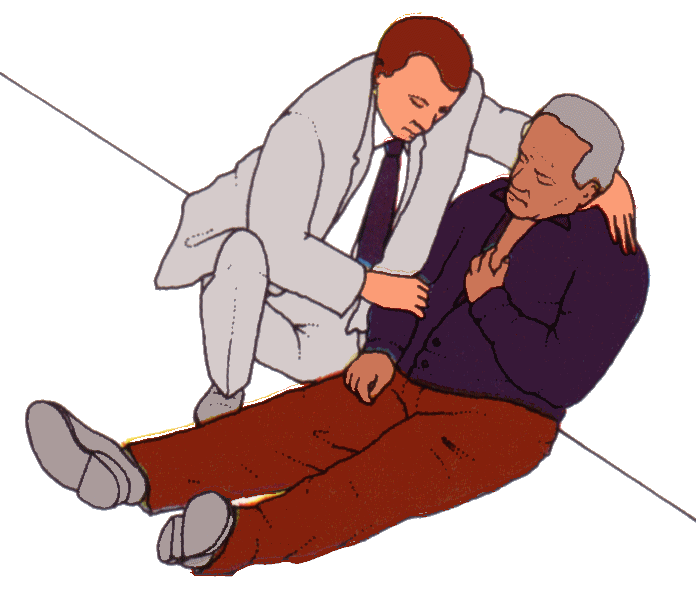
What is 'Heart disease', or 'coronary heart disease’?

The heart muscle is living and needs food and oxygen to survive. There are arteries within the heart muscle, which supply the food and oxygen to the heart muscle. These arteries are known as coronary arteries. When one or more of these arteries in the heart get narrowed, or partially blocked, then it leads to coronary artery disease. When one or more of these arteries get blocked then some part of the heart muscle does not get food and oxygen. This condition is called a heart attack.
The term, Coronary artery disease is used for problems, which include: angina, heart attack, and heart failure.
(It may be confusing as there are other heart conditions such as heart valve problems, congenital heart problems, etc. However, these are not usually included when we talk about 'heart disease').
The root cause of most cases of coronary artery disease or cardiovascular disease is a build up of atheroma - a fatty deposit within the inside lining of arteries. A blockage caused by the development of complex atheromatous plaques, composed of inflamed tissues and fatty deposits on the inner surface of the artery. These plaques develop slowly over time and may cause chronic restriction of blood flow leading to pain on exertion (angina) or it may lead to as acute blockage. This most often occurs when the irregular, inflamed surface of the plaque leads to the f
ormation of a blood clot. When this occurs a region of heart muscle is suddenly deprived of blood and gets damaged. This is what is known as a heart attack. If the damage is relatively limited the heart can recover but major damage can lead to death. Similar degeneration of arteries in the brain leads to loss of blood supply and stroke or death. Smoking and high levels of blood cholesterol, associated with high intakes of saturated fat, are both major risk factors for these plaques, coronary artery disease and strokes.
CAD or Coronary Heart Disease occurs due to either one or more of the following.
- Spasm of the blood vessel (intermittent construction)
- Artherosclerosis (fatty deposits / build up)
- Thrombus (Blood clot blocking the vessel)
The effect of complete blockage of the blood vessel due to any one or a combination of the above three causes results in

death of Heart Muscle.
Plaque : When the lining of an artery is damaged by the formation of fatty deposits between the layers of the artery wall is called plaque.This plaque formation gradually extends resulting in narrowing of the artery constricting the channel through which blood flows. The supply of nutrients and oxygen through this narrowed artery decreases resulting in increased work load on the heart which then tends to beat faster. The increased heart rate or work-load demands increased blood and nutrients supply which cannot be met by the narrowed heart artery – resulting in angina.
Artherosclerosis : The term is used to describe the hardening of the arteries. This begins early in life & progress with age. As these deposits increase, the arteries become progressively narrowed with blood supply and flow also being reduced proportionately. The process of artherosclerosis may be stopped and in some cases reversed.
Thrombus : When a plaque builds up in an artery and the blood flow consequently gets reduced and slowed down, the turbulence to blood flow which occurs causes a clot (thrombus), this clot can slowly grow in size till it completely blocks a major portion of the vessel. The processes known as thrombosis and usually results in a heart attack. Though blockages take decades to form, a thrombus may form and produce its effects in minutes.

Spasm : Spasm, like name suggests is a sudden closure or constriction of the artery due to acute contraction of the muscular wall of the artery. This causes restriction or decreases or even a sudden cutoff of the blood flow. This may be momentary – resulting in mild symptoms of pain or discomfort or more prolonged leading to a stroke or attack